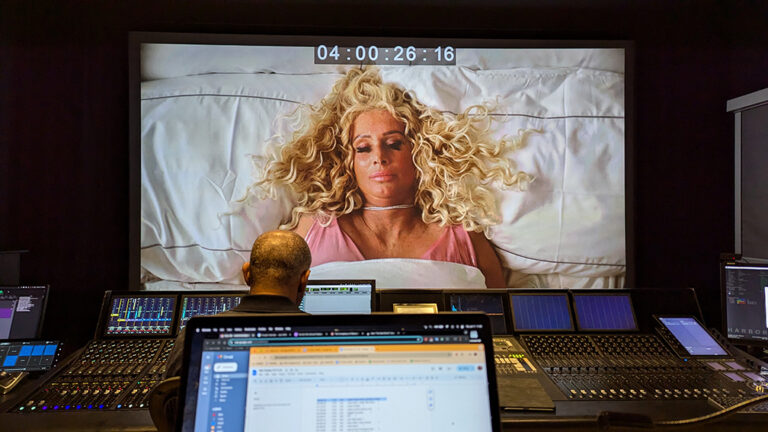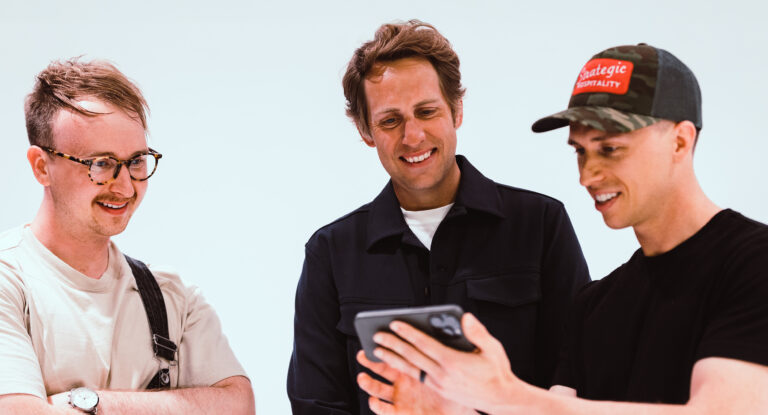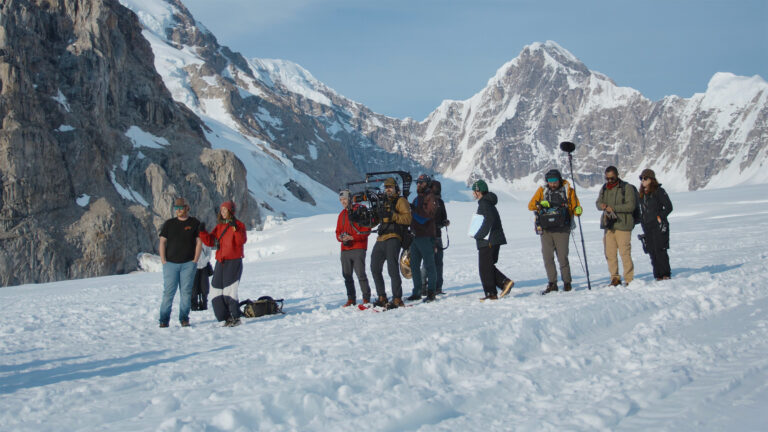Highlights
- With eight individual sites and a worldwide audience of approximately 10 million monthly readers, the Gizmodo Media Group creatives deal with high volume and compressed schedules.
- Gizmodo Media Group doesn’t just review tech—they actually use it.
- Working across multiple sites and locations means wearing lots of hats.
- Future-proofing your work is essential to functioning as a well-oiled machine.
If you want to learn about anything from politics and pop culture to technology and twerking, Gizmodo Media Group (GMG) is pretty much your one-stop shop. And apparently, they’re doing something right, garnering approximately 10 million readers from a worldwide audience each month.
The flagship site, Gizmodo.com, has been in existence for over a decade as a go-to site for tech reviews and news—but it’s only in the last several years that it’s expanded its blog format to include video content across all of GMG’s sites.
The demands of producing news-based content always imply tight schedules, but the sheer volume of producing content across the many sites that fall under GMG’s umbrella means that there’s never a dull moment for the lean and fleet-footed production teams.

How do they manage their daunting workloads? In this installment of Made in Frame, three of their very busy creatives give us an inside look.
Blog plus video = Gizmodo’s brand
Under the GMG banner fall eight individual sites, including Lifehacker, Jezebel, The Root, Splinter, and Kotaku. Under Gizmodo specifically (which caters to a science and technology audience), you’ll also find Earther, which focuses on climate and conservation that delve more deeply into the documentary territory, and i09, which focuses on science fiction and the future.
It’s clear that the creatives embrace GMG’s mission: first, the sites are blogs, and videos are there to either complement the blog format or serve as stand-alone, all-encompassing pieces. It’s one of the reasons you won’t perceive the text as strictly in support of the video or vice versa in a kind of “see and say” way.
Second, the writers and the video team work closely in tandem to ensure that the pieces they produce both inform and entertain.
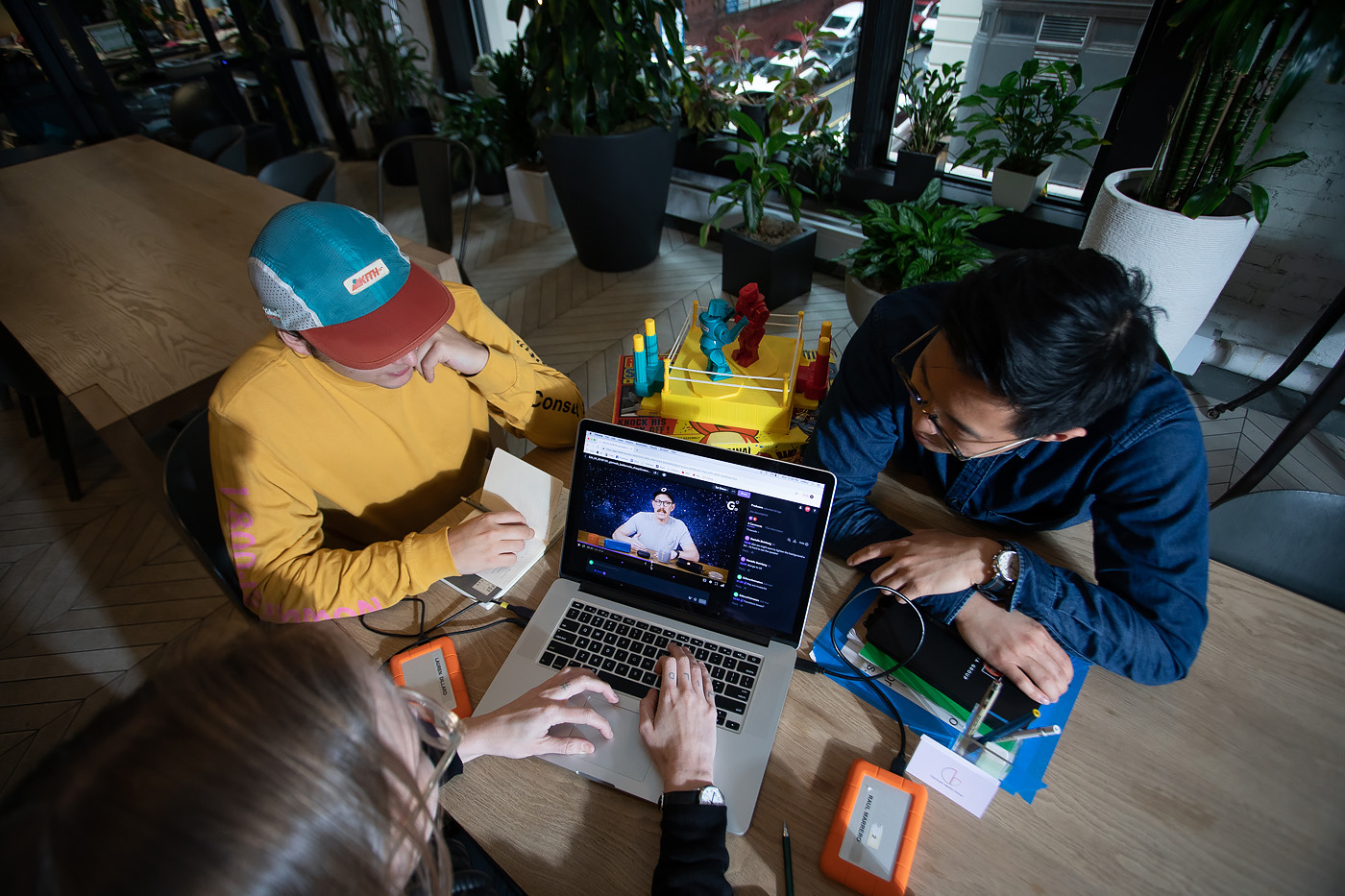
Take, for example, some of the more popular series that run on the sites. You’ll find “From the Lab,” which takes viewers to far-flung laboratories doing cutting-edge work; “Show Me Your Nerd,” which showcases individuals with unusual collections from accordions to View-Masters; and “Cheap Talk,” a hybrid lifehack/tech review series that helps viewers upgrade common technologies in budget-conscious ways.
Hint: if you haven’t already, you should check all of them out. You’ll learn, and you’ll laugh (and, yes, cringe a little, too).
What’s in a title?
The team members have titles that sound slightly ambiguous for a reason. Joon Chung, creative producer, is mostly an editorial one-man band who edits content, designs graphics, and collaborates with in-house animators. He also participates in the writing process. Joon works with a number of the teams, including Gizmodo, Jezebel, The Root, and Splinter, all of which carry different demands and schedules.
 Creative Producer Joon Chung
Creative Producer Joon Chung
Lauren Dillard is a creative producer whose workflow leans more toward post-production. She edits, designs graphics, and collaborates with editorial to produce content. She also has a background in music production. Lauren’s workflow focuses mainly on videos for Gizmodo, io9, and Earther.
Raul Marrero’s title of video producer encompasses working as a camera operator, editor, and workflow organizer. Like Lauren, his focus is primarily on assignments for Gizmodo, Earther, and i09.
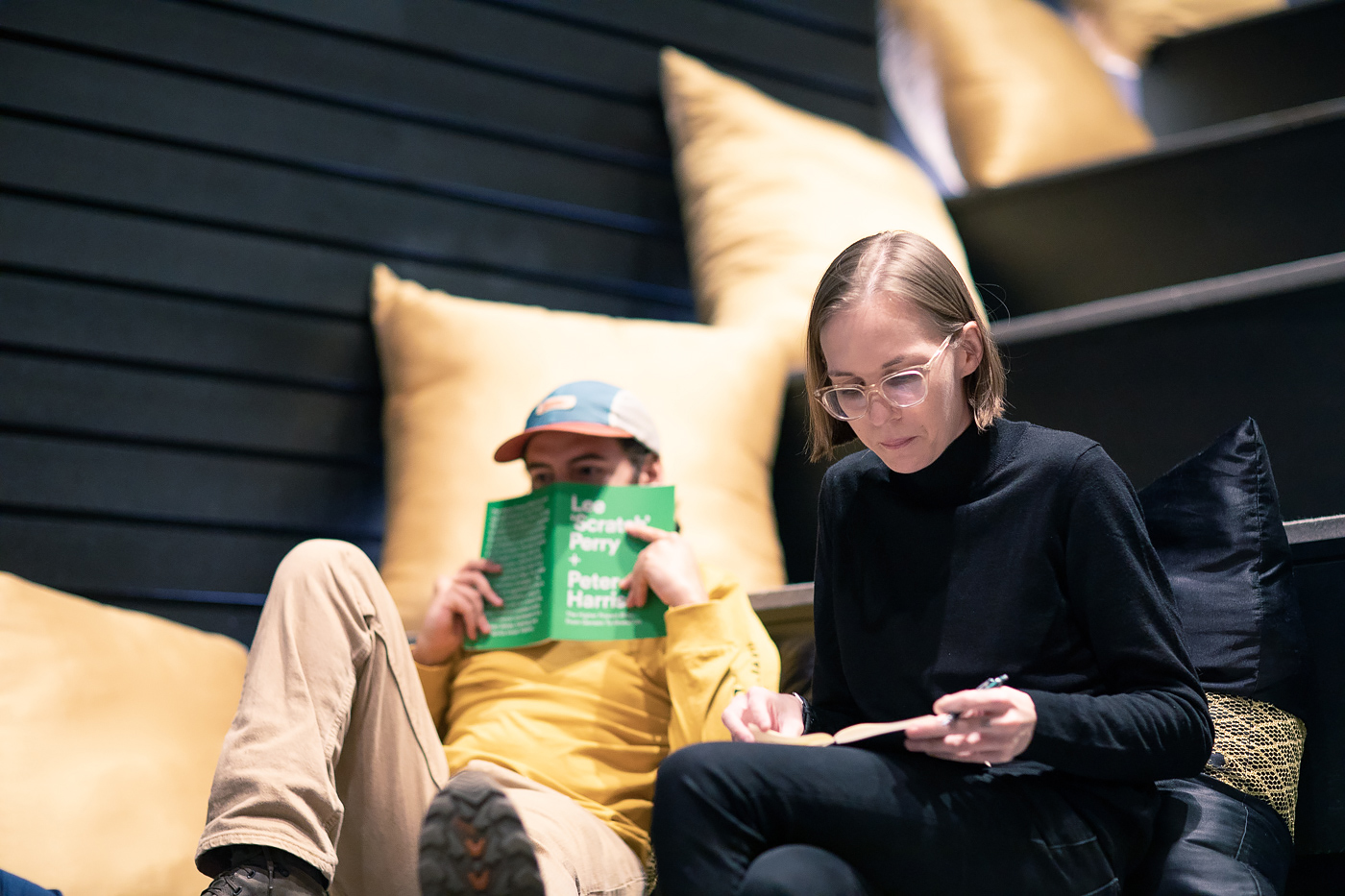 Video Producer Paul Marrero and Creative Producer Lauren Dillard
Video Producer Paul Marrero and Creative Producer Lauren Dillard
All three are based in the New York office, but interface regularly with the Oakland and L.A. teams in California. Joon and Lauren tend to spend more time in New York, as they focus mainly on post-production, while Raul travels extensively, shooting and producing in the field as well as in the onsite studio in New York..
Standardization and organization
You might be surprised to learn that unlike much of the video content that plays on websites and social media outlets, GMG’s videos are delivered at 1920 x 1080 for the web.

GMG is constantly pushing the technology they use and revising their best practices to incorporate new and better ways of working.
In their New York office, there’s a central server that all of the approximately twenty video team members can access, which is especially handy because the different sites have their own stylistic rules. Libraries of backgrounds, templates for subtitles and graphics, transitional elements, bugs, bumpers, and more live on the server, as well. “The editors either build their own graphics or call upon one of the two in-house animators, which is why having the templates readily available is important,” Joon says.

Adobe Premiere is the NLE of choice across GMG. For graphics and animation, they use Photoshop, After Effects, and Flash. With editors working across multiple sites, organization is key. As Joon says, “the main thing is to future-proof your work so that anyone can figure out what you’ve done and where to find the elements they need.”
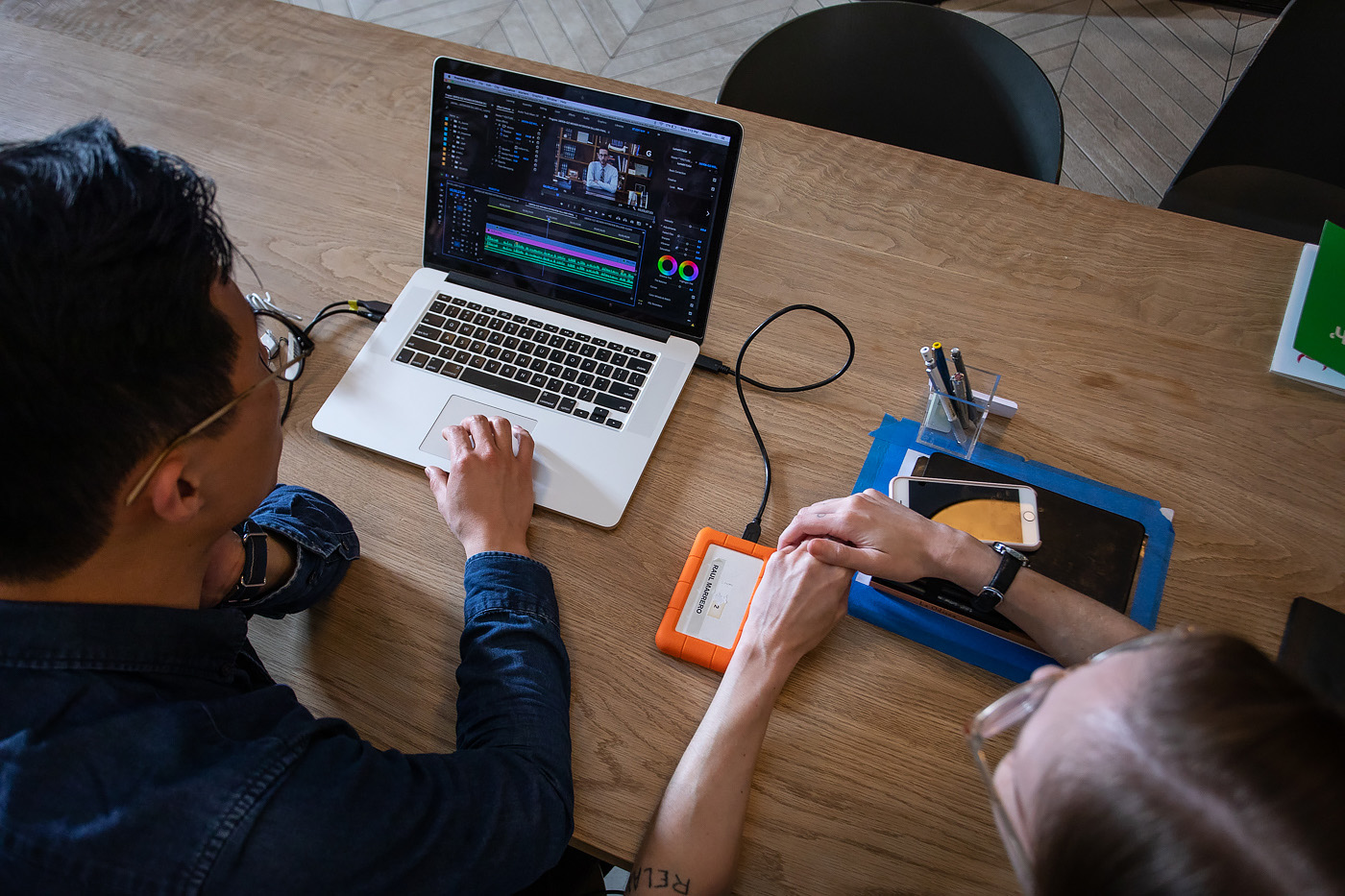
Communication is key, and they primarily rely on Slack for messaging (“We almost never use email,” Lauren says), while Frame.io plays a large part in their work-sharing and feedback processes.
Frame.io and the need for speed
Because some of GMG’s sites deal with timely or news-based topics, they’re always eager to find ways to speed up their workflow. “For example, on Splinter we might have a three- or four-hour turnaround,” Joon says. Given the breathless pace at which news breaks currently, it’s conceivable that even that’s lengthy.
But Gizmodo’s deadlines can be similarly unforgiving, especially when they’re reporting from CES (the Consumer Electronics Show) where new and breakthrough technologies are debuted and tech sites scramble for the scoop.
Raul outlines the workflow from his most recent trip to Las Vegas for CES. “As soon as I was done shooting, I was able to go right to the press lounge there, connect to my hotspot, download the footage, make a rough cut and upload it to Frame.io, and then send it to anyone who had to weigh in.
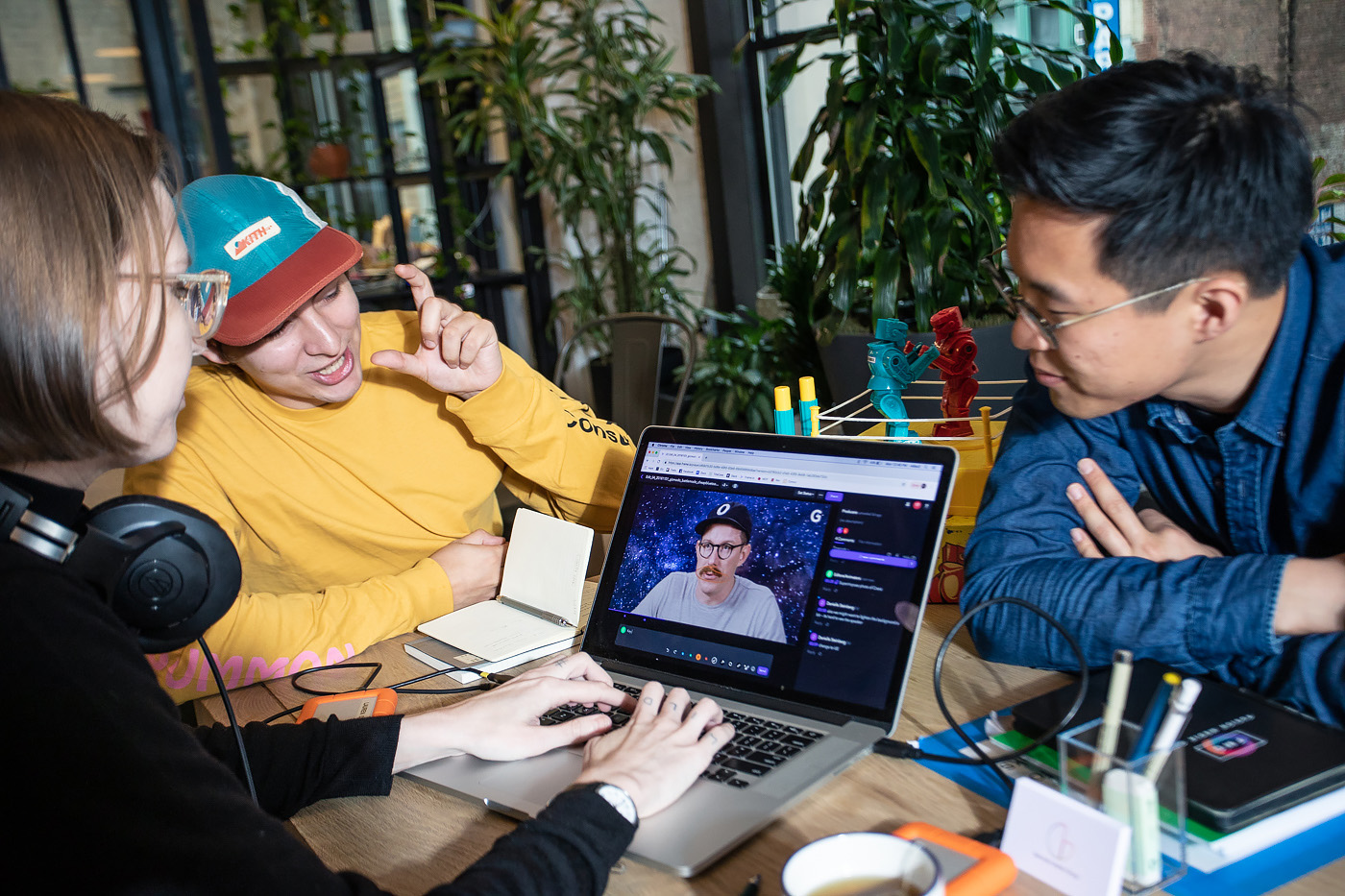
Some of the crew were with us in Las Vegas, but they were covering other parts of the conference, and we also had editorial members in New York who were involved with the process, so I was able to get notes back in basically real time. Also, the reference images connect exactly to your Premiere files, so you can address changes quickly and accurately. You’re seeing the timecode and there are no misunderstandings.”
On the occasions when, perhaps, Raul isn’t the editor who will finalize the piece, “I would make a selection of the best footage, color grade it, and then just export a ProRes 4444 QuickTime to Frame.io to make it faster for the editor get the piece out, rather than setting up a RAW file transfer.”
“When we’re in a rushed or high-stakes situation, Frame.io really helps us compress our turnaround,” Raul adds.
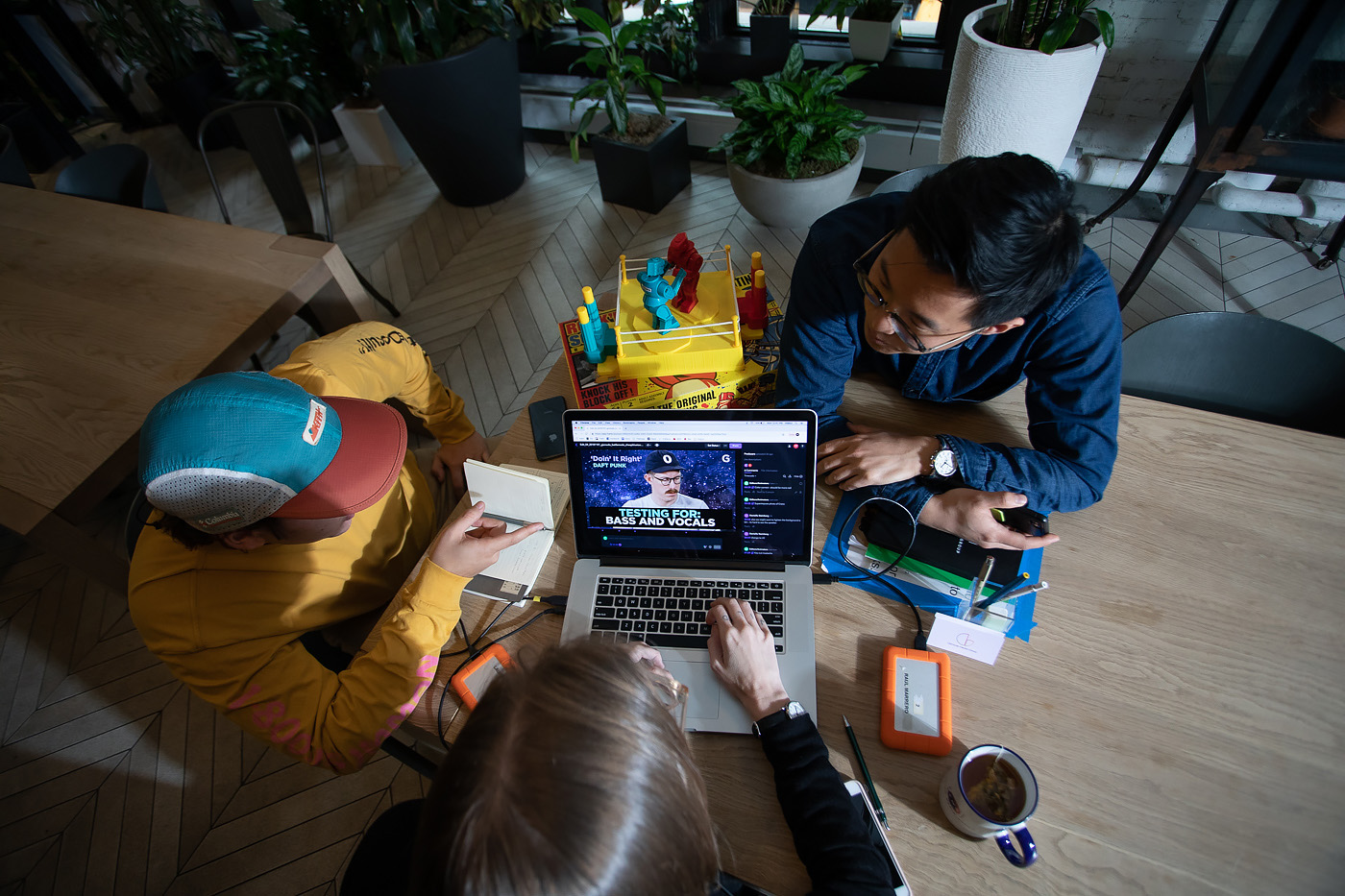
Similarly, Joon discusses how Frame.io has come into play on Splinter. “When you have copy editors who need to make sure that the subtitles are correct, especially on projects that deal with important news topics where you’re talking about people’s lives, Frame.io helps them spot errors frame accurately and communicate them back.”
A high-tech workflow that works for the whole team
Because the video component of the sites is so deeply entwined with the blog component, writers often travel with the camera crew for the longer, more documentary-style field pieces.
One such example is the Earther series “From the Lab,” on which both Lauren and Raul work. There were two groups out in the field: one was in Mexico where they traveled to a mountaintop laboratory to measure the highest energy light in the universe, while concurrently Raul’s group was in Hawaii.
“We visited a laboratory where they’re doing genetic experimentation and cross-breeding different species of coral in order to make them more resilient to warmer water temperatures,” Raul says. He was the director, producer, and cinematographer, and traveled with another camera operator and writer, who doubled as on-camera talent.
It was a complicated and time-sensitive production, requiring them to capture the one night during which the corals release their egg bundles. Not only did they shoot at night, but they also shot underwater, all while being mindful to not interfere with the scientific research taking place in front of the lens.
“I was using two Sony FS7s as our main cameras,” Raul says, “and also had a Sony A7S which I used when I was either shooting in pitch darkness on a boat or needed to use along with a gyro stabilization system. We used the Sony A7S and a water housing, along with GoPros for the underwater footage, and we also used Canon 5Ds for the time-lapse photography.”
Because they were working within a limited shooting window, they had to streamline their process in all possible ways. “Working with all the different camera systems, I had to make sure I was shooting in the correct codecs and color spaces. I used a Sekonic L-478DR-U-EL light meter that permitted me to program the latitude of different camera systems in order to match exposures seamlessly.”
Once again, this is where Frame.io played a role in the workflow.
“I needed to make dailies of all of my footage quickly so I could get material to the editorial team,” Raul says. “I was responsible for going through the footage and making selects. I’d then upload the time-coded sequences to Frame.io to get to Lauren and to the people working on the graphics. I could just point them to the timecode of the shot I wanted them to use in a particular place.”
Lauren concurs. “I’d receive selects from Raul and then would go upload, export a link and upload it to Frame.io as a select link, basically, to start getting feedback. And then we’d work on it for a while and create versions.

“It’s helpful being able to see everyone’s notes and check off when you’ve honored them. It makes it really easy to see how my work is progressing and to be able to comment back directly on someone’s comments. You don’t have an email thread and everything stays very concise.”
Because they’re also working in Premiere, Lauren and Raul are able to scrub through video using the same hotkeys as in Premiere. “It’s very intuitive,” Lauren says.
Beyond their work on the Hawaii project, they also needed to communicate rapidly with the Mexico team to ensure that they were keeping their visual language consistent. And by way of adhering to their mission to make sure that the written content complements and enhances the video, the video team had to work closely with the writers.
“Frame.io gives us a centralized hub, so the writer was able to go in there, look at the footage, and request stills for her blog post,” Raul says.
The editor-writer connection
“The best videos are the ones that work well on the script level. Typically, if it doesn’t work on the page, it’s hard to make the video sing,” Joon says.
 He cites the “Show Me Your Nerd” series. “The story is coming from the interviews, but it’s being put together by the writer based on what the subject has said. That’s why it’s important to have the writer access the footage so they can help to craft the script.”
He cites the “Show Me Your Nerd” series. “The story is coming from the interviews, but it’s being put together by the writer based on what the subject has said. That’s why it’s important to have the writer access the footage so they can help to craft the script.”
It’s the Gizmodo version of a paper edit. “The writer and/or producer can identify what feels good, and then they’ll hand it over to the editor. Meanwhile, the graphics or animation can get going, as well.”
Some writers are more (or less) video savvy, and that’s one of the challenges of the job that Joon enjoys. “I used to wonder why it was that I had an affinity for editing,” Joon says. “I realized that it was because I have a comedy background. I can work with a writer and we can punch up a script together so it’s not a case of something being written and then just read on-camera.”

The video editors work iteratively with the writers, which is one reason why Joon is so adamant about the need to “version up” rather than just editing over an existing piece as revisions come in. “You don’t want to blow over an existing version and then have to backtrack to re-incorporate something that you previously had in there that suddenly makes sense again.”
And, of course, Joon emphasizes the importance of shooting plenty of B-roll. “When we were covering the Dakota Pipeline protests for Splinter, the B-roll was critical. You had the main narrative going on day after day, so the B-roll was what helped us to tie the coverage together.”
With the producer onsite, they were able to use Frame.io to get cuts back and forth quickly and because the organization of elements is so thorough at GMG, when Joon was cutting he was able to draw from the library of B-roll elements that were accruing over the course of the protest.
In the end, story is everything. “We have a lot of creative latitude,” Joon says. “So whether we get the story through script or graphics or B-roll or whatever, it’s always about having a beginning, middle, and end.”

Putting their tech where their mouths are
If you were to guess that at GMG the creatives were not just developing content about new technology, but using it themselves, you’d be right.
“We try to be very critical about the tech we’re testing,” Raul says. “We want to understand it and make sure that we’re not just celebrating something without really working with it. It’s important that our videos not feel like ads.”
If, for example, they’re doing a piece about a new phone, they might actually shoot part of the piece on that phone. They’ve incorporated DJI drones, the new iPhone XS, and even used a Flir thermal camera to do a barbecue grill review in order to demonstrate how evenly it heated up.

“As technology changes and new things come out, we adapt. You have to, if you’re going to keep ahead of the curve of what the latest tech can do,” Raul says.
But it’s not just tech for tech’s sake.
“Of course you’re only as good as your teammates and the people you’re working with,” Raul says. “But your toolset is your best asset when it comes to upping your creative game. If you’re able to use tools that minimize complications and help you focus on what you’re trying to achieve creatively, that’s the perfect balance.”
Joon, Lauren, and Raul all agree that because they’re working across multiple sites and teams, anything that makes communication and workflow easier is a no-brainer for them.
So next time you’re browsing on Gizmodo, think about this: the creatives there are doing their best to be objective about the technology they tout.

Photography by Irina Logra.


